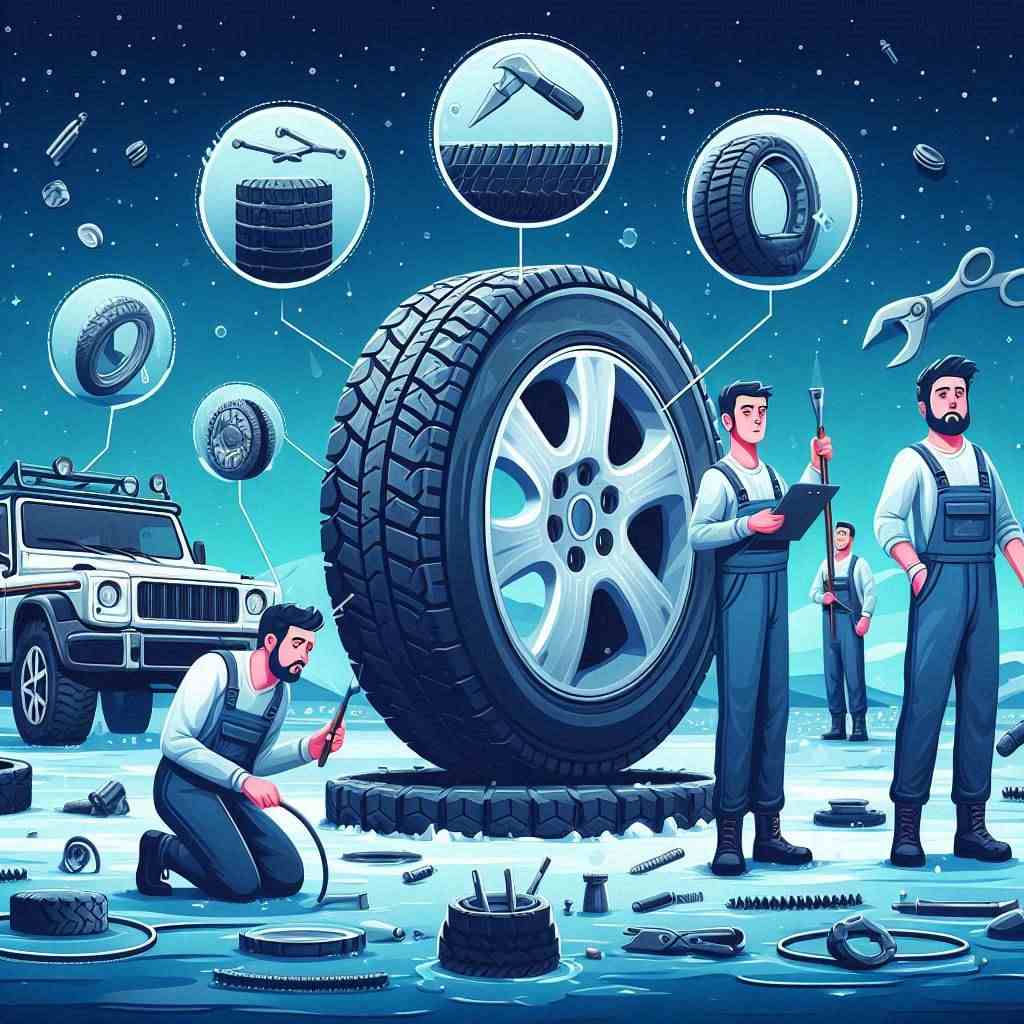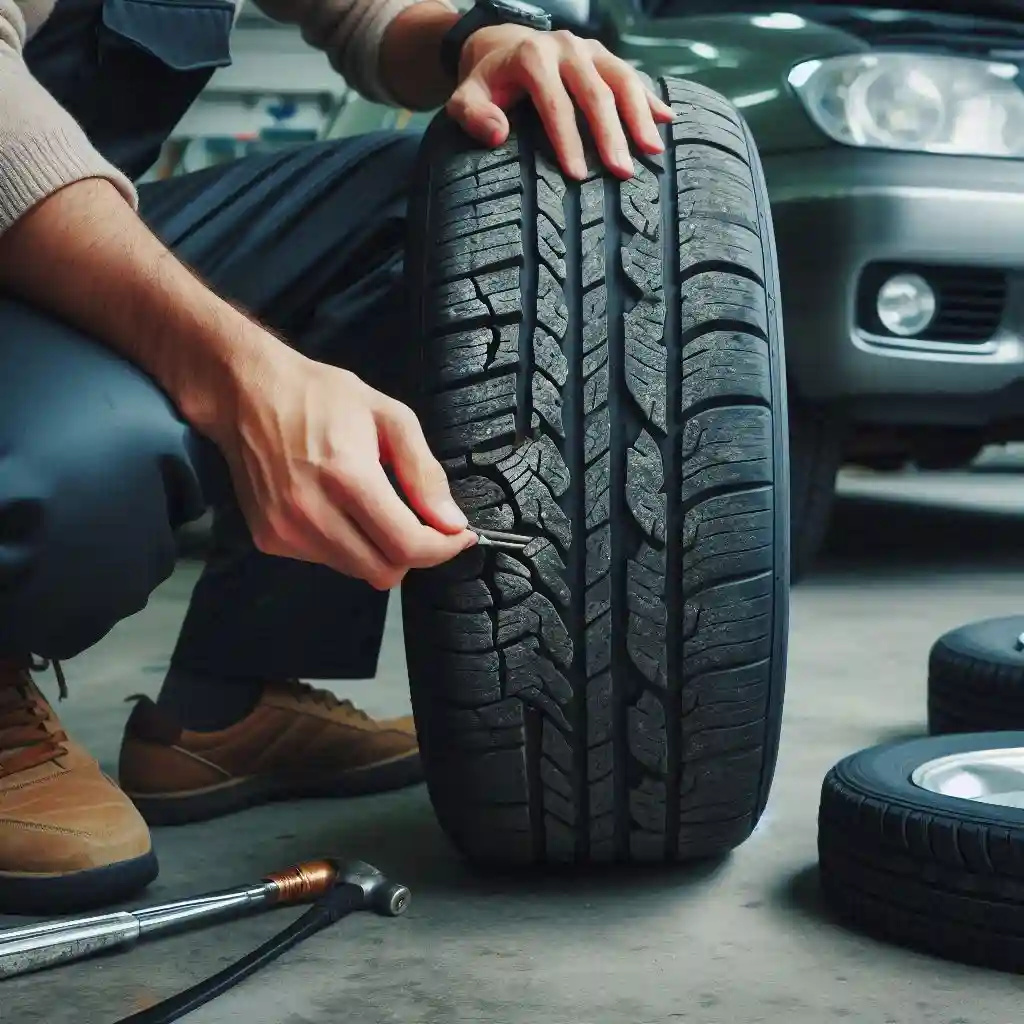Your vehicle’s tires are crucial for safety, performance, and fuel efficiency. Recognizing the signs of tire wear and knowing when to replace your tires can make all the difference in your driving experience. In this comprehensive guide, we’ll explore ten critical signs of tire wear and when to replace your tires, along with tips on maintenance and prevention.
Introduction to Signs of Tire Wear and When to Replace Your Tires

Understanding the signs of tire wear and when to replace your tires is an essential skill for every driver. Worn tires can lead to decreased traction, longer stopping distances, and increased risk of blowouts. By learning to recognize these signs of tire wear, you can ensure your vehicle remains safe and performs optimally. In this post, we’ll cover everything from tread depth measurement to understanding tire age, helping you make informed decisions about when to replace your tires.

1. Tread Depth: A Critical Sign of Tire Wear
One of the most important signs of tire wear is decreased tread depth. The tread of your tire is designed to channel water away from the tire’s surface, maintaining grip on wet roads. As tires wear, this ability diminishes, making it crucial to monitor tread depth.
How to check for this sign of tire wear at home
The penny test is a simple method to check for this sign of tire wear. Insert a penny into the tread groove with Lincoln’s head upside down and facing you. If you can see the top of Lincoln’s head, your tread depth is less than 2/32 inch, and it’s time to replace your tires.
When to replace tires based on tread depth
Most experts recommend replacing tires when the tread depth reaches 2/32 inch. However, in wet climates, you might want to consider replacement when the depth reaches 4/32 inch for better water displacement.
2. Uneven Wear Patterns: A Tell-Tale Sign of Tire Wear
Uneven tire wear is not only a sign of tire wear but can also indicate when to replace your tires. It may also point to other vehicle issues that need addressing.
Identifying this sign of tire wear
Look for these uneven wear patterns:
- Center wear: The middle of the tread is more worn than the edges.
- Edge wear: The outside edges are more worn than the center.
- Cupping: Dips or scalloped dips appear around the tire’s circumference.
When to replace tires showing uneven wear
If you notice significant uneven wear, it’s often a sign to replace your tires. However, addressing the underlying cause (like improper inflation or misalignment) is crucial to prevent premature wear on your new tires.
3. Sidewall Damage: A Serious Sign of Tire Wear
Damage to the sidewall is a critical sign of tire wear that often indicates when to replace your tires immediately.
Inspecting for this sign of tire wear
Regularly check for small cracks, bulges, or blisters in the sidewall. These can occur due to age, exposure to sunlight, or impact damage.
When to replace tires with sidewall damage

Damage to the sidewall is a critical sign of tire wear that often indicates when to replace your tires immediately.
Inspecting for this sign of tire wear
Regularly check for small cracks, bulges, or blisters in the sidewall. These can occur due to age, exposure to sunlight, or impact damage.
When to replace tires with sidewall damage
If you notice any bulges, blisters, or deep cracks in the sidewall, replace the tire immediately. These are signs of severe structural weakness and increase the risk of a blowout.
4. Age-Related Signs of Tire Wear
Even if your tires look fine, age can be a significant factor in determining when to replace your tires.
Recognizing age-related signs of tire wear
Look for:
- Small cracks in the rubber, especially in the sidewall
- Faded color
- Brittle or dry-rotted appearance
When to replace tires based on age
Most tire manufacturers recommend replacing tires every 6-10 years, regardless of tread depth. The rubber compounds in tires degrade over time, even if the tire isn’t being used.
5. Visible Tire Wear Indicators
Modern tires come with built-in wear indicators to help you easily identify signs of tire wear and when to replace them.
Understanding this built-in sign of tire wear
These are small, raised bars in the main grooves of the tire tread. When the tread has worn down to the same height as these bars (usually 2/32 inch), it’s a clear sign of tire wear indicating it’s time to replace the tire.
When to replace tires based on wear indicators
Once the tread is level with the wear indicators, replace your tires immediately. Driving beyond this point significantly increases the risk of hydroplaning and poor traction.

6. Vibrations and Handling Issues: Subtle Signs of Tire Wear
Sometimes, you can feel signs of tire wear before you see them. These sensations can also indicate when to replace your tires.
Recognizing these signs of tire wear while driving
Watch out for:
- Vibrations in the steering wheel or seat
- Pulling to one side while driving straight
- Decreased stability during turns
When to replace tires based on handling issues
If you experience persistent vibrations or handling issues that can’t be resolved through balancing or alignment, it may be time to replace your tires.
7. Frequent Loss of Tire Pressure: A Deceptive Sign of Tire Wear

Consistently low tire pressure can be a sign of tire wear and may indicate when to replace your tires.
Monitoring this sign of tire wear
Check your tire pressure at least once a month. If you find yourself frequently adding air to a specific tire, it could be a sign of wear or damage.
When to replace tires losing pressure
If a tire consistently loses pressure and no puncture can be found, it may be due to porosity caused by age or wear. In this case, replacement is often the best solution.
8. Visible Damage: Obvious Signs of Tire Wear
Regular visual inspections can catch potential issues before they become serious problems and help you determine when to replace your tires.
Identifying visible signs of tire wear
Look for:
- Cuts or gashes in the tread or sidewall
- Bulges or blisters
- Embedded objects like nails or screws
When to replace tires with visible damage
Small punctures in the tread area can often be repaired. However, if you see any of the following signs of tire wear, it’s time to replace the tire:
- Sidewall damage
- Large punctures
- Any damage that exposes the internal structure of the tire
9. Mileage: A Cumulative Sign of Tire Wear
The lifespan of your tires depends on various factors, including driving habits and road conditions. Mileage can be a good indicator of when to replace your tires.
Understanding mileage as a sign of tire wear
On average, tires last between 25,000 to 50,000 miles. However, performance tires may wear out sooner, while some all-season tires can last up to 80,000 miles.
When to replace tires based on mileage
While there’s no fixed mileage point for replacement, start checking for other signs of tire wear more frequently as you approach 25,000 miles or the manufacturer’s suggested lifespan.
Performance Changes: Subtle Signs of Tire Wear
As tires wear, you may notice changes in your vehicle’s performance, indicating when to replace your tires.
Recognizing performance-related signs of tire wear
Watch for:
- Loss of traction, especially in wet conditions
- Increased stopping distance
- Reduced fuel efficiency
When to replace tires based on performance changes
If you notice significant changes in your vehicle’s performance that can be traced back to the tires, it’s likely time for a replacement.
Preventing Premature Tire Wear
Understanding the signs of tire wear and when to replace your tires is crucial, but prevention is equally important.
Tips to delay when you need to replace tires
- Rotate your tires every 5,000 to 8,000 miles
- Keep tires properly inflated
- Have your wheels balanced and aligned regularly
Conclusion: Acting on Signs of Tire Wear
Recognizing the signs of tire wear and knowing when to replace your tires is crucial for your safety on the road and the performance of your vehicle. By regularly checking for these ten critical signs of tire wear, you can ensure that you replace your tires at the right time, avoiding potential hazards and maintaining optimal vehicle performance.
Remember, when it comes to tire safety and replacement, it’s always better to err on the side of caution. If you’re unsure about any signs of tire wear or when to replace your tires, don’t hesitate to reach out to professionals.
For expert advice on signs of tire wear and when to replace your tires, trust Sandagiri Battery and Tire Works. Our experienced technicians can provide expert assessments and top-quality tire solutions to keep you safe on the road. Contact us today for more information or to schedule a tire inspection. Your safety is our priority, and we’re committed to helping you recognize signs of tire wear and determine the right time to replace your tires.
FAQs
1. How often should I check for signs of tire wear?
Check your tires at least once a month and before long trips.
2. What’s the most important sign of tire wear?
While all signs are important, tread depth is often considered the most critical sign of tire wear.
3. Do I need to replace all four tires when I see signs of wear?
It’s generally recommended to replace all four tires at the same time for balanced handling and performance.
4. How do weather conditions affect tire wear?
Extreme heat can accelerate tire wear, while cold weather can cause tire pressure to drop, leading to uneven wear if not addressed.
5. Can rotating my tires delay when I need to replace them?
Yes, regular rotation helps ensure even wear, potentially extending the life of your tires.




